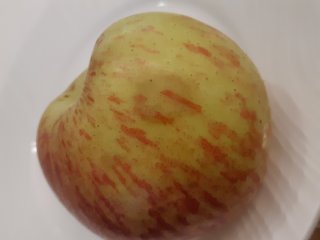
Apple disorders and diseases
Good quality products are free from diseases and disorders. Customers will not buy apples with rots or with damaged skin. But also fruit that looks good on the outside but is brown or soft inside will not lead to happy customers. There are dozens of different diseases and disorders and these are not always easy to recognize. However, a good diagnosis is important. By recognizing the symptoms of a disease or disorder, it can be linked to the cause. If you know the cause, you know what measures can be taken to prevent the disease or disorder in the future.
Identifying apples diseases and disorders
Handling damage
Disorders and diseases

Apple disorders visible at harvest
Several apple disorders find their origin in the apple orchard. Some of them are already visible at harvest, but also some of them may worsen during storage. On this page we show some examples and explain how the problems start.

Internal apple disorders that develop after harvest
Several internal disorders of apples develop during storage or shortly after storage. Most of these disorders are only visible when cutting the apple into pieces. Here an overview is provided of the main internal disorders that occur after harvest.

Apple skin disorders that develop after harvest
Several skin disorders are not yet visible at harvest, but they will develop during storage or at other steps in the chain. Here we give an overview of the main skin disorders that can be found on apples

Apple rot caused by fungi
Apples can be affected by many different fungi. Here we give an overview of some frequently occurring rots caused by fungi.

